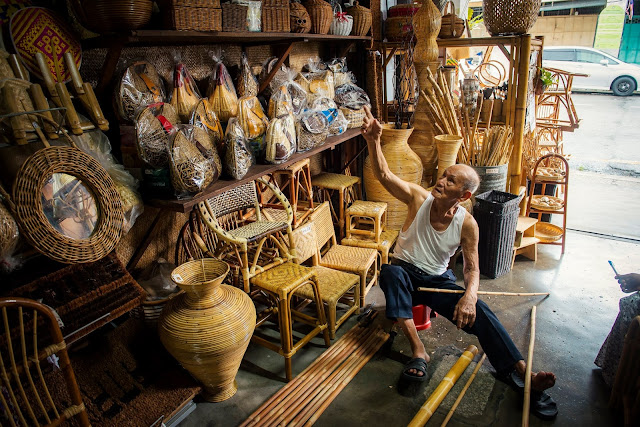 |
| (Photo: Penang Global Tourism Facebook Page) |
George Town was the place for Chinese medicine and orh kueh (yam cake) when I was young. Both shops are not there anymore. Today, they serve latte and cempedak cheese cake.
This year's July 7 marked the twelfth year of George Town's inscription as a UNESCO World Heritage Site. There has been a contest over the interpretation of the inscription, couched in phrases from the humanities.
When new businesses replace under-performing ones, it's labelled "Disneyfication". When properties receive new tenants, it's scorned as "gentrification". When heritage buildings are being refurbished, it's castigated as "Unesco-cide".
Marco D'Eramo epitomises this school of thoughts. "UNESCO’s ‘World Heritage’ listing," he writes, "is the kiss of death. Once the label is affixed, the city’s life is snuffed out; it is ready for taxidermy."
Taking a step back, I wonder if this is a form of nostalgia fossilisation?
I understand the concern to preserve the "identity" of George Town. But can we say that today's collective identity is the progeny of George Town's past? This is iffy, is there such identity in the first place, not least a collective one?
There is sympathy for tenants who are affected by rising rental. But isn't rent-seeking a problem happening elsewhere too, not confined to heritage site?
Community changes are associated to a string of factors. But when it happens in George Town, enthusiasts labelled it as "gentrification"? What then do we call rent-seeking that occurred in 2007 George Town, before the city was listed by Unesco?
Like most trades, traditional trades in George Town have no guaranteed immortality. The Chinese medical hall that my family frequented had shut before the Unesco appellation came. As Dr Ang Ming Chee, general manager of George Town World Heritage Incorporated, observed:
“[If] the craftsmen don’t want to produce and the locals do not take these products as a part of their identity, then you’re stuck as well. For it to be sustainable you have to look at it in the long term. There’s supply and demand; and there’s the availability and cost of the raw materials.
“[If] the craftsmen don’t want to produce and the locals do not take these products as a part of their identity, then you’re stuck as well. For it to be sustainable you have to look at it in the long term. There’s supply and demand; and there’s the availability and cost of the raw materials.
“Take rattan weaving for example – it might be harder or costlier to obtain raw materials due to factors such as urbanisation and deforestation. Rattan weaving is a skill, but most of the weavers we interviewed who decided not to continue their craft said it was because weaving is too painful – if you look at their hands, you can feel the pain. They work hard to send their children for higher education so that they don’t have to do physical work; it’s an achievement for them, whereas we want continuity – we are selfish.” (Emphasis added.)
Is the pain of rattan weavers a characteristic of George Town's heritage and must therefore persist?
Fossilising nostalgia may be a hobby to enthusiasts but George Town gained prominence as a trading port. People from
surrounding region came here to trade. New businesses were formed to
serve them, and many made their home here as a result. Changes haven't stopped in the past 300 years.
Carving life into stone, suspending momentum that makes George Town what it is today may not be the way forward for the heritage site.
Instead, can George Town's future be re-imagined as the heart of the 21st century trade? Startups creating unicorn in a 19th century shop?
The potential of the heritage buildings in George Town is not confined only to serving latte and cempedak cheese cake.
